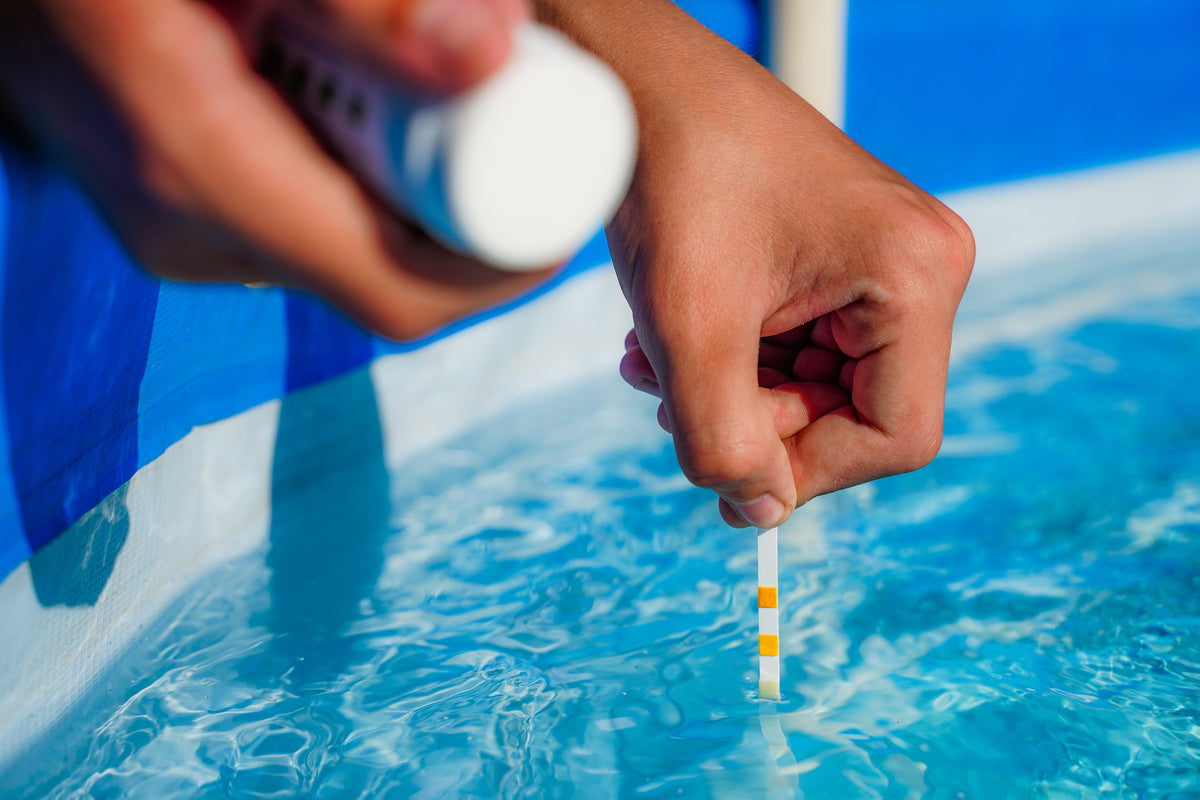
Pool Test Strips: The Owner's Way for Quick Checks
|
|
Time to read 4 min
|
|
Time to read 4 min
Using pool test strips is one of the most convenient ways to ensure that your pool water is always balanced and safe for swimming.
Whether you're a new pool owner or a seasoned pro, understanding how to use these strips effectively can save you time, money, and frustration. Let's dive into how to make the most of pool test strips and why they might just be the best tool for maintaining your pool.
While pool test strips are incredibly popular among homeowners, professionals often use more advanced methods.
Many pool experts rely on liquid test kits, which use drops of reagent to provide highly accurate readings. However, pool test strips are still widely used in the industry for their convenience and quick results. They are a great option for routine checks, especially for busy pool owners who want fast and reliable information.
The debate between pool test strips and liquid test kits has been ongoing for years.
Pool test strips are faster and more convenient, making them ideal for regular use. They’re easy to store, and a single strip can test for multiple parameters at once.
On the other hand, liquid test kits tend to be more precise, which is why they are often preferred by professionals.
If you're looking for quick, reliable results with minimal hassle, pool test strips are your best bet. For the most accurate readings, especially in commercial pools, a liquid test kit might be the way to go.
You might be wondering, “Can I really trust pool test strips ?” The answer is yes, but with a few caveats.
Pool test strips are generally accurate enough for home use and routine testing. However, it's important to store them properly to ensure their effectiveness. They can go bad if they’re exposed to moisture, heat, or sunlight, leading to inaccurate readings. Always keep them in a cool, dry place, and be sure to check the expiration date before use.
The frequency of testing your pool water depends on several factors, including the season, the number of swimmers, and how often you use your pool.
Generally, it's recommended to use pool test strips at least twice a week during the swimming season. If your pool sees heavy use or if there's been a recent storm, you might want to test it more frequently. Regular testing ensures that you catch any imbalances early, preventing problems before they escalate.
Reading pool test strips is easy, but accuracy is key.
First, you'll want to dip the strip into the water, about 18 inches deep.
Hold the strip in the water for just a few seconds, usually about 5 to 10, but always check the manufacturer's instructions.
Once you remove the strip, hold it horizontally and wait for the colors to develop, which usually takes about 15 to 30 seconds.
Compare the colors on the strip to the chart provided with your test strips to determine the levels of chlorine, pH, alkalinity, and other important chemicals in your pool.
This is a common question we get, the answer is that most strips are designed to work quickly, providing results in under a minute.
Leaving the strip in the water for too long can lead to inaccurate readings. Simply dip the strip in, hold it for 5 to 10 seconds, and then remove it to compare with the color chart.
AquaCheks 7 Way Pool Test Strips give pool owners an easy, effective way to test the most important factors of system health and safety: total hardness, total chlorine, total bromine, free chlorine, pH level, total alkalinity, and cyanuric acid.
Once inserted into water, these pool test strips produce a quick, accurate reading of these critical levels, helping you to identify and then correct problems in your pool.
After removing the strip from the water, simply compare the resulting colors with the chart.
Total Hardness: Measures the amount of calcium and other minerals found in your pool water. You want this to be balanced (as it can damage the equipment and surfaces) and between 175-275 ppm.
Total Chlorine/Total Bromine: Amount of chlorine or bromine in your water. The range needs to be between 1-4 ppm.
Free Chlorine: Measures the amount of chlorine available to sanitize the water. This controls algae and kills bacteria. Keep levels between 1-4 ppm.
pH: Measures how acidic your pool water is. If pH is imbalanced, it can damage pool equipment, and impact the effectiveness of your sanitizer. Keep pH between 7.2 and 7.6.
Total Alkalinity: Alkalinity is very similar to pH, and low alkalinity can cause the pH to fluctuate, while high alkalinity can cause pH to go up. Maintain total alkalinity between 80-150 ppm.
Cyanuric Acid: A stabilizer that measures the amount of cyanuric acid found in your pool. This needs to be maintanied to at least 30 ppm.
Pool test strips are a lifesaver for busy pool owners who want reliable results without spending too much time on maintenance.
They’re quick, easy to use, and provide all the information you need to keep your pool water balanced. While they might not be as precise as liquid test kits, pool test strips offer a level of convenience that’s hard to beat. For routine checks, they’re more than sufficient to keep your pool in great condition.
So, if you’re looking to simplify your pool maintenance routine, grab a pack of pool test strips and see the difference they can make. For more detailed guidance on pool chemicals, you can check out this comprehensive guide to keep your pool water perfectly balanced.
